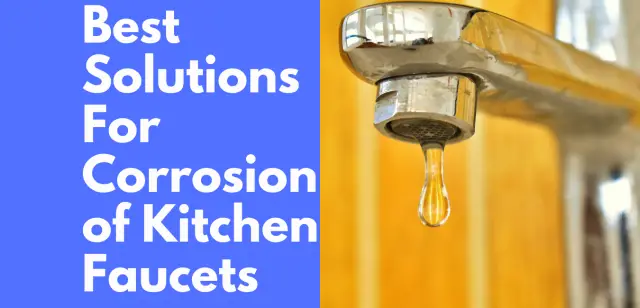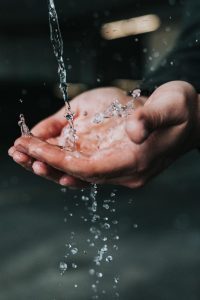The most common problem you may find in your kitchen is corrosion of kitchen faucets. Corrosion causes your faucets and pipes to appear rusty. Rust can appear both on the interior and exterior of your faucets. This can lead to several problems like altering the appearance of your faucets or affecting their performance.
Several factors cause corrosion. Once you are familiar with the causes of corrosion, you can take up various measures to prevent or remove them. And if you do not treat corroded faucets on time, this can lead to some permanent damage.
Also, if you use water from a corroded faucet, it can cause some adverse effects on your health. Here is an article that we researched about the corrosion of kitchen faucets and how to tackle it.

Table of Contents
Causes of Corrosion of Kitchen Faucets
Effect of Hard Water
 Hard Water
Hard Water
Old Faucets

Time is another factor that causes corrosion. In a busy household, people usually forget to keep a check on their faucets. You are likely to pay attention to faucets only when they have collected rust or are acting faulty.
Faucets that have been used for a long time can also corrode naturally. So, maintaining and keeping a check on your faucets from time to time can go a long way.
Environmental Factors
Certain environmental factors such as temperature and moisture can also lead to corrosion of kitchen faucets. The presence of bacteria in water or the environment is another factor that can corrode your faucets.
Extended exposure of faucets to oxygen and moisture also erodes them. Various pollutants present in the air have adverse reactions on steel, which may lead to corrosion.
Problems Caused By Corroded Kitchen Faucets
Health Problems
Water flowing through a corroded faucet, known as corrosive water, is mostly contaminated with harmful materials. Even if you boil this water before use, it may still carry some toxic contents that may adversely affect your health. Corrosive water causes several diseases and may also lead to certain skin disorders.
The appearance of faucets
Rusted faucets are one of the most common results of corrosion. These rusty scales and layers on your faucet make it less appealing to look at.
Performance of Faucets
The process of corrosion on faucets not only affects their physical attributes but also hampers their performance. Some common problems are leaking faucets, decreased pressure in the flow of water, or faulty smell.
The presence of rust in its interiors may block the flow of water, leading to low water pressure. Leakage is another common problem in corroded faucets. The valve seat in your faucets may get corroded, which leads to leakage.
Solutions For Corroded Kitchen Faucets
Vinegar Solution
Vinegar is one of the most potent cleaning agents. If dismantling your faucet is possible, then you can soak the rusted parts in a solution of white vinegar.
If not, you can dab a clean cloth in vinegar and clean the rusted areas. After cleaning with the vinegar, you need to wash it with clean water and dry it. However, this method is useful only for the faucet’s exterior.
Lemon Juice Paste
This is another solution to remove rust from the exteriors of a faucet. Clean the faucet with warm water or a clean cloth to remove any excess dirt and loose debris.
In a bowl, mix ¼ cup of salt with two tablespoons of lemon juice. Make a paste out of it and apply it evenly on corroded parts. Leave it on for about thirty minutes and gently brush the areas. Finally, wipe off the paste with a clean cloth and dry off the faucet. You can repeat this step if required.
Baking Soda
This process is useful for cleaning the interior as well as the exterior of the faucets. For this, you will have to disassemble the tap from the pipe. If you have the required tools, then you can easily do this.
Once you disassemble it, keep the faucet open and turn it upside down. Pour some amount of baking soda in its interior as well as exterior. You can use a small brush to brush off the interiors as well as the surface. Then, wash it with clean water and fit it back on the pipe.
Replacing The Entire Faucet
Sometimes, cleaning your faucet can be a challenge. You may not have the time, or home remedies may not give you the desired results.
In this case, replacing your faucets is an ideal choice. If your faucet is old or has faulty performance, then replacing it with a new one is the best solution available. You can purchase a new faucet and replace it on your own with the required tools or get a professional plumber to do it.
Conclusion
Corrosion of faucets has adverse effects, yet it is not so difficult to tackle this problem. One of the best steps you can follow to avoid corrosion is to clean your faucets daily. Make sure not to use hard detergents or brushes while cleaning them. This may scratch and damage your faucets which leads to corrosion.
Corroded faucets can be treated with various home remedies on your own. However, if things go out of hand or you do not get the desired results, you can always ask a professional to fix the problem.
